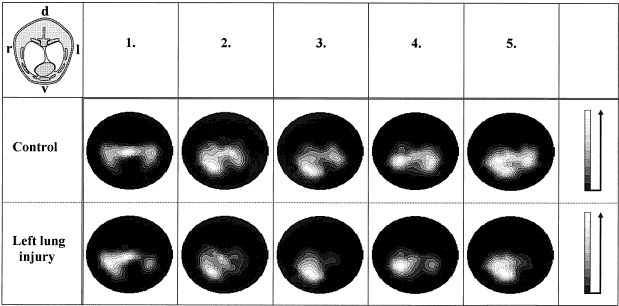
Figure 3 (from Frerichs et al, 1998): Thoracic functional EIT images before (Control) and after the development of artificially induced left lung injury (Lung injury) reflecting the distribution of ventilation in the five animals studied. (The lungs are typically located in the central and ventral parts of the thorax due to the well developed backbone musculature in pigs.) The schematic cross-section of the pig thorax in the left upper corner shows the spatial orientation of the images. Each image is scaled to the individual maximum impedance variation. The scale shows that higher local impedance variation (i.e. higher fluctuation of regional lung volume) is represented in light tones